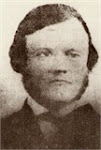Wisconsin government workers receive defined benefit pensions, meaning that the retirees receive a more or less certain amount of monthly benefits based on their number of years in the system, their age, and their three-highest paid years.
For the typical worker, the retirement system collects an amount equal to 11.2% of the employee's gross pay. Theoretically, the employer pays half and the employee pays half, but the state has contributed the employee's share for all the years I've worked at the state (that goes back to 1986).The full 11.2% has become an expected part of the employee's compensation package.
Piling on. WPRI would like to force employees to pay that share out of their pay - which would amount to about a 6.1% pay cut (and more like 7% more for employees in the public safety jobs). This pay cut would be on top of the effective 3% pay cut as a result of the governor's furloughs (if the furloughs even end, this loss of pay will theoretically be restored).
It is inarguable that the Wisconsin state retirement system provides better pension benefits than the vast majority of private sector workers. It may come as a surprise to most workers today, but private sector employees used to have good pensions, too.
Check out this amazing chart. There you have the Reagan Revolution at a glance. In 1979, fully 62% of private sector employees were covered by a defined benefit pension. By 2005 that number had dropped to 10%. Defined contribution plans became the overwhelming plan of choice.
...
WPRI's answer is lower all workers' benefits rather than aspire to improving benefits for the private sector. Divide and conquer. Don't fall for it. State workers are not fat cats.
Bigger Picture
The shift to defined contribution plans will impose social and economic costs. According to a story from the Wharton School, Not So Golden: Employees -- and Employers -- Feel the Pinch from Shortfalls in Retirement Funding, Published: April 01, 2009 in Knowledge@Wharton:
"Workers continue to have almost complete discretion over whether to participate, how much to contribute, how to invest, and how and when to withdraw the funds. Evidence indicates that people make mistakes at every step along the way. They don't join the plan, they don't contribute enough, they don't diversify their holdings, they over invest in company stock, they take out money when they switch jobs and they don't annuitize at retirement."
At the end of their working careers it is entirely likely that many employees in defined contribution plans will end up with inadequate reserves to carry them through their retirement years. Given that there are some 66 million employees covered by these defined contribution plans, the shortfall in individual retirement funds will coalesce into a large problem, a very large problem that threatens to undermine the economy.
***
How sound is WRS? Check out the report from the Pew Center. Search for "wisconsin".
In 2000, more than half the states were fully funded. By 2006, that number had shrunk to six states. By 2008, only Florida, New York, Washington and Wisconsin could make that claim.
...
The aggregate numbers, while impressive, do not tell the whole story. States are performing dramatically differently in managing this bill coming due. States such as Florida, Idaho, New York, North Carolina and Wisconsin all entered the current recession with fully funded pensions. As a result, these states will be in a better position to keep their plans on a solid financial footing in the immediate future.
...
In the rare instances where a plan has little or no unfunded liability, these normal costs make up the entirety of the actuarially required contribution. In those cases, as long as pension benefits are moderate, the annual contribution to the plan is a relatively low percentage of the plan’s covered payroll. In North Carolina, for example, the actuarially required contribution was $675.7 million or 3.2 percent of payroll in fiscal year 2008. In Wisconsin, it was $644.8 million or 5 percent of payroll....
Sharing Risk with Employees
Some of the states in which pension systems are in better fiscal shape have developed ways to share at least some of the risk of investment volatility with employees. Wisconsin, for instance, has substituted a dividend process for standard cost-of-living increases. If the investment returns are positive in a year, the system can declare a dividend that gets paid to retirees. But this is not guaranteed. If a good year is followed by a year with poor investment returns, retirees can see their pensions reduced.166 In fact, in May 2009, pensions were reduced by 2.1 percent in Wisconsin for all members who had received prior dividends. The only guarantee is the base benefit.
















Yeah, this kind of stinks a little that Lightbourn is involved with this, noting that he did not reach 30 years as a state employee (and the supposed full pension that he may have been denied?) He still seems to care a lot about Monona and its financial success, despite this.
ReplyDeleteYes, he does care about the city and provided good leadership on the CDA. He will get/is getting a pension based on the formula (years of service and three highest paid years).
ReplyDeleteThe same thing will happen to health insurance with Health Savings Accounts that happened to pensions since the 80s. It's a constant battle to keep current levels of benifits, which were a trade off years ago for higher pay.
ReplyDelete